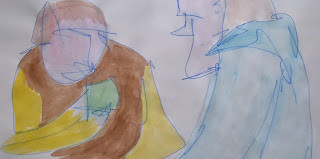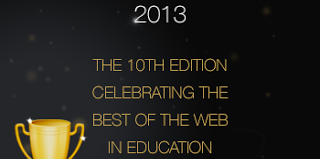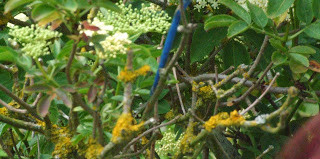Home Syndicated
Syndicated
This is the firehose, all external content syndicated into the site.
Hello world!
I had to start over with this website. Spammers added so many files that my server host threatened to shut me down.
Good opportunity to create a new theme. Coming soon.
Comunicación sobre Big data y e-research en Congreso Latina de Comunicación Social 2013
La pasada semana tuve la suerte de poder asistir al V Congreso Latina de Comunicación Social, en La Laguna, Tenerife. En el evento coordiné, el 5 de diciembre y junto a mi compañero Esteban Romero Frías (@polisea), de la Universidad de Granada, una de las mesas de comunicaciones, “Ciencias Sociales y Humanidades Digitales: técnicas, herramientas [...]
Ignite & Maker Night at Chico State
Peter Kittle and I combined classes for a student produced Maker & Ignite Talk night. Here’s a brief video Peter created about our event: And here’s a visual summary of a fabulous evening: http://storify.com/drjaxon/chico-ignite-talk-and-maker-night Ignite Talk videos will be up soon!
Best 150 #edtools in #eddies13 :50 best free #education web tools and 100 #mlearning apps
Hi and welcome . After in my previous post here I nominate again my favorite in Edublog Awards, now I want to share with you Best 150 edtools in #eddies13 selected by teachers worldwide . This year Edublogs use my favorite lists curation tool Listly for all finalists and now everyone can vote for his favorite .
Before to read about all this awesome edtools and apps I recommand to read https://lucianecurator.contently.com/ blog posts this year:Top 100 #websummit startup tools who can disrupt Social Media world http://bitly.com/top100websummitstartup ; Top 100 edtools discover at #iste13 http://bitly.com/iste13edtools
Also don't forget to read weekly my blog to discover Top 20
This year I was the 1st who discover that Edublogs used Listly to select winners because I used this curation tool all year long and you can follow me here http://list.ly/LucianeCurator

Before to read about all this awesome edtools and apps I recommand to read https://lucianecurator.contently.com/ blog posts this year:Top 100 #websummit startup tools who can disrupt Social Media world http://bitly.com/top100websummitstartup ; Top 100 edtools discover at #iste13 http://bitly.com/iste13edtools
Also don't forget to read weekly my blog to discover Top 20
This year I was the 1st who discover that Edublogs used Listly to select winners because I used this curation tool all year long and you can follow me here http://list.ly/LucianeCurator
Ambassadors if you want to win best #eddies13 #edtool join @listly http://t.co/o47BJy6Mno ;vote @GlogsterEdu http://t.co/eUuQQuUyxy #edchat
— LucianeCurator (@LucianeCurator) December 5, 2013What edtool and mLearning app you like more ? Please leave a comment and also see all this year Edublogs Finalists http://list.ly/edublogsVideo: Life stories
Well I've been off line for the last few weeks as my mum fell off a step coming out of the dentist and broke her right hand. She picked herself up, got into her car and as she phrased it "waited until I felt up to driving home." The next day her hand w...
Validation
Today was the type of day where I was struggling to figure out why I do this job.
I had planning first period today and didn't get anything done that I wanted to because I had to meet with another teacher. What should have taken 5 minutes turned into 30 so I ended up wasting almost my entire planning period.
Not only that but my students are slowly going stir crazy which means they are starting to bounce off the walls in class. Not only that, but I caught a student cheating today as well as another one misusing their computer (we are a 1-to-1 school). So I had to write two detentions.
I had 30 emails in my inbox from various people. Most from parents that have seemed to have only recently discovered our online grade book with live grading. They are suddenly wondering why their child is failing when they could see all the missing homework assignments. The others are from students that are realizing that their interim grade will get them in trouble (grades were due this morning) so they now decide to take an interest in their academic performance.
One of these parent emails was questioning if their child really received a 13/15 on a pop quiz dealing with MLA citations. The reason they were questioning was because I had put in the directions "all or nothing." I responded back saying that when I didn't say that on the first quiz, I got total crap back (I said this in a much more professional manner don't worry) so I figured I would scare them into giving me the correct citation. Needless to say it worked because 90% of my sophomores gave me a citation that was either perfect or near perfect. I had no idea what type of response I would get back from this parent, so when I saw that he responded to me my email, I held my breath. I opened it to find this:
I had to read the email a couple of times to make sure that I had read it correctly and to let it sink in. It isn't every day that you get an email telling you that what you're doing has meaning and a purpose. Especially from a parent.
This gave me the validation I needed and reminded me that what I do does have a purpose and it isn't just about babysitting crazy kids and bowing to demands of parents. I am actually attempting to teach my students something valuable in life.
I will save this email forever so that when I need a pick me up, I can just look at it and remember.
All you parents out there, if you think your child's teacher is doing a good job, tell them. You never know how much better you can make a teacher's day with a simple five minute email.
I had planning first period today and didn't get anything done that I wanted to because I had to meet with another teacher. What should have taken 5 minutes turned into 30 so I ended up wasting almost my entire planning period.
Not only that but my students are slowly going stir crazy which means they are starting to bounce off the walls in class. Not only that, but I caught a student cheating today as well as another one misusing their computer (we are a 1-to-1 school). So I had to write two detentions.
I had 30 emails in my inbox from various people. Most from parents that have seemed to have only recently discovered our online grade book with live grading. They are suddenly wondering why their child is failing when they could see all the missing homework assignments. The others are from students that are realizing that their interim grade will get them in trouble (grades were due this morning) so they now decide to take an interest in their academic performance.
One of these parent emails was questioning if their child really received a 13/15 on a pop quiz dealing with MLA citations. The reason they were questioning was because I had put in the directions "all or nothing." I responded back saying that when I didn't say that on the first quiz, I got total crap back (I said this in a much more professional manner don't worry) so I figured I would scare them into giving me the correct citation. Needless to say it worked because 90% of my sophomores gave me a citation that was either perfect or near perfect. I had no idea what type of response I would get back from this parent, so when I saw that he responded to me my email, I held my breath. I opened it to find this:
Yes, thank you. That does clear up things, if not assuage my concerns. Couple of things, first both my wife and I support you (and the other faculty) 100% - we stand by your calls. Secondly, I place English, specifically writing composition, as equally important as any STEM course work. I continually find the engineers and scientist I work with needing my help putting their message on paper in a succinct and grammatically correct manner. Also, as far as the students these days need subtle threats to get their attention, what’s up with that? It used to work on me, but the kids these days are impervious. All joking aside, thank you for making our children think, and we really appreciate the job you are doing.
I had to read the email a couple of times to make sure that I had read it correctly and to let it sink in. It isn't every day that you get an email telling you that what you're doing has meaning and a purpose. Especially from a parent.
This gave me the validation I needed and reminded me that what I do does have a purpose and it isn't just about babysitting crazy kids and bowing to demands of parents. I am actually attempting to teach my students something valuable in life.
I will save this email forever so that when I need a pick me up, I can just look at it and remember.
All you parents out there, if you think your child's teacher is doing a good job, tell them. You never know how much better you can make a teacher's day with a simple five minute email.
EDCMOOC2: Week four: feel the fear – and get visual anyway
This week for many of us is all about the artefact. Here we are – all grown up – and suddenly we start to worry about committing to our ideas – about showing our thinking – and about being judged! Noooooooooooooooooooooo!
So – this post is about feeling the fear – and getting visual anyway; because the biggest feature of the digi-verse is that it is visual. We know this – this is why we have been asked to represent our learning visually each week – this is why there was an images competition – and this is why our artefact is supposed to contain as few words as possible. Let the pictures do the talking…
First: Don’t Panic!
Try to loosen up – stop hiding behind the sofa – and think. Have something to say… work out some ideas and thoughts …
Then leap in and play with one of the bits of tech.
And if the tech bit feels overwhelming – reach out to the #edcmooc community and ask for help. It is there – and working online with a frainger (virtual friend and stranger) makes this #edcmooc experience even richer.
Don’t wait for the answer
As with academic writing though, do not wait till you know everything that you want to say…as we write to learn, so we make to learn – and our ideas can develop as we construct our artefact.
Tech tools and resources can be found here:
And here’s one I could never have made - Animating Chomsky’s ideas: http://www.youtube.com/watch?v=zex7yxN4GW0
Thinking about the visual
Drawing is a useful tool for thinking, exploring, reflecting, understanding and communicating. Drawing and other art practices can also be really useful in qualitative research: to disturb those commonsense answers that might automatically come to respondents; plumbing deeper or more interesting thoughts about our questions. This is why the production of a visual artefact is so very right for #edcmooc – and I would say for all courses.
If you need more convincing, check out how drawing and visual practices have been embedded in and across the curriculum at BrightonUniversity(see http://www.brighton.ac.uk/visuallearning/). Here you can see examples of Medical students set a photography project to develop their ability to really ‘see’ – to harness that in their diagnostic practices. Travel and Tourism students sent out with cameras and asked to construct visual narratives of Brighton that told its story as a viable tourist destination.
The one that I liked the best was where Art Students and other participants in a Community Arts Project were all issued with white overalls and asked to use them as their (embodied) Learning Logs. Not only was this a great way to invite and capture immediate reflections, at the end of the Project the overalls were mounted on mannequins and provided a powerful exhibition demonstrating the work of the Project.
Building a visual strength
If you have no confidence in your own drawing – try this out. ‘Blind draw’ someone in the room with you right now – or ‘blind draw’ an object in the room. This is NOT drawing with your eyes closed – but drawing someone whilst looking at them – but not looking at the paper you are drawing upon. Also keep the pen on the paper – so there will be lots of crossing lines – there will be breaks and gaps in the drawing. There will be – gasp – whisper it – mistakes and errors!!!
Of course these drawings cannot be an accurate realistic representation of someone – but they can be fun and energising. And that is the point.
Too many of us stop ourselves from drawing because, ‘I can’t draw!’ But drawing can be free and crazy as well as detailed and accurate. We have to play with drawing. Build our confidence to use drawing for exploration and communicating. Without this we are cutting ourselves from a very powerful thinking tool.
Try practising ‘blind drawing’ your #edcmooc ‘learning logs’ or ‘blind drawing’ the illustrations for your blog. Use these drawings to build your artefact. In earlier parts of Last Refuge we have explored how to communicate in collage and memory envelopes – and by creating installations or cabinets of curiosities… Any of these might be useful for you to harness when making your artefact – check out:
If you are interested in Surrealism, Dadaism see http://lastrefugelmu.blogspot.co.uk/2013/06/artmooc-week-2-fantastic-art-and.html).
I do hope this helps a bit!!
Postscript: Post- and Transhumanity:
A very positive TED talk from Henry Evans – rendered mute and quadriplegic by a stroke – on how robotics has enabled him to do tasks, talk with people – and move around the world. Remembering that first he needed his family and friends to hold him in the world after the event…
Another Nail in the Coffin of the Idea of Lone Genius
From "A Little Society", by Casey N. Cep, boldface mine:
Despite Charlotte Brontë’s insistence that her sister Emily wrote Wuthering Heights, the rumor that their brother Branwell penned the novel has persisted. ...The persistence of the rumor reflects the curious, cloistered upbringing of the Brontës, but also the more universal experience of siblings. Collaboration and competition between brothers and sisters exists no matter their vocations, but literary siblings challenge our assumptions of lonely genius, isolated writers alone at their desks. Patrick Brontë, father to the four artists, who raised them himself after their mother died, wrote: “As they had few opportunities of being in learned and polished society, in their retired country situation, they formed a little society amongst themselves—with which they seem’d content and happy.”“A little society” is the perfect description of siblings. Brothers and sisters have long encouraged one another’s literary careers: letters and drafts change hands; carefully chosen words of praise and criticism pass between lips; scraps of paper, coveted notebooks, and particular pens move between writing desks.
#eddies13 celebrate 10 years . Here are my Top 20 nominations
Now into the 10th year teachers worldwide are nominalized .Before to read all my nominations I recommand to read https://lucianecurator.contently.com/ blog posts this year : Top 100 #websummit startup tools who can disrupt Social Media world http://b...
#EDCMOOC2: Week 3: Rubbing Hume’s big toe: philosophical and technological questions about being human
So what is an online course – and what should a course entitling itself ‘E-learning and Digital Culture’ look like? I have been somewhat frustrated by discussions breaking out across the Forums about whether this can even be considered a course about E-learning; that surely ‘all’ we’re doing is exploring culture... I know that every course needs to also be interrogated and challenged – but it seems to me that this becomes a form of pedantry that misses the point about the course as created – and as it can be experienced.
So, ‘E-learning and Digital Cultures’, I thought the *e* bit was a great hook to draw people into the course - and then the course itself exploded concepts around e-learning, digital cultures... Instead of idea-definition-discussion… we were encouraged to understand or at least explore *e* issues through the lens of popular culture and its metaphors for education, teaching, learning and humanity.
This enabled creative and lateral and connected thought about humans learning in an inter-connected, digital culture. No other approach to this topic that I have encountered has come anywhere near allowing these sorts of thoughts! Definitely government and institutional policy documents do not encourage or allow it. They only offer metaphors of control, remediation and constraint.
In our institution we are supposed to have a blended learning ethos - and everybody seems to focus on the *e* part of the blend... usually in negative or self-punishing ways: I am not doing enough of this e stuff... I cannot do the e bit... the technology that I have does not support my e work ... I have no time to develop the e aspects of my work ... I will fail my appraisal because I am not e enough.
In our institution we are supposed to have a blended learning ethos - and everybody seems to focus on the *e* part of the blend... usually in negative or self-punishing ways: I am not doing enough of this e stuff... I cannot do the e bit... the technology that I have does not support my e work ... I have no time to develop the e aspects of my work ... I will fail my appraisal because I am not e enough.
A terrible overarching narrative has been created that distracts staff from their students, from their humanity, from the love that they had of their subject and from any thought about creative approached to LTA.
I feel that #edcmooc by its form and content engages creatively in a fight with this very negative discourse – and that is why it is so exhilarating, so refreshing – and, dare I say it, so brilliant!
I feel that #edcmooc by its form and content engages creatively in a fight with this very negative discourse – and that is why it is so exhilarating, so refreshing – and, dare I say it, so brilliant!
It is in this context that a colleague and I are fighting also for a more nuanced and extensive definition of blended learning itself:
"Learning is social, collective, embodied… Learning is active and interactive. Learning can happen through talking, writing, reading, playing, drawing, researching and making – including making digital artefacts. Learning can be fast and furious. Learning can also be slow and embodied. Learning can be face-to-face, it can happen on-line – and it can happen in some blend of the two.
"Learning is social, collective, embodied… Learning is active and interactive. Learning can happen through talking, writing, reading, playing, drawing, researching and making – including making digital artefacts. Learning can be fast and furious. Learning can also be slow and embodied. Learning can be face-to-face, it can happen on-line – and it can happen in some blend of the two.
We propose the notion of a blend that is not just a mix of face to face and online learning, but includes blending direct teaching with student active learning and problem-solving – and blending a range of different methods and multimodal activities around the learning of a particular topic: role playing and simulations; creative and art-based strategies; Inquiry-, Problem- and Project Based Learning; Reflective learning; Visual practices development; Poetry, Prose and Policy analysis; Image-, Object- and Topic Mediated Dialogue; Real research; Digital artefact and resource development; Blogging and other Social Network activities; Peer-to-peer learning..."
We know that we have a real struggle on our hands – not just in terms of extending notions of e- and blended learning – but also because in these outcomes-targets-measurement driven times, even people of good will would prefer it if all we really did *was* to inculcate literacy, numeracy and the ‘ICT skills necessary for business’ (Harnessing Technology, 2008 – government policy on technology enhanced learning – read it and weep!).
As I said in a Forum thread – I would model my practice on this MOOC in a heartbeat.
Moving swiftly on: So – week three and discussions:
- How do we define ‘being human’ or ‘human’?
- Does and online course need a human presence?
Resources Week 3 – We’re all post-human now…
Film 1: Toyota GT86: the ‘real deal’ advert (1:01): Watch on YouTube
Film 2: BT: heart to heart advert (0:40): Watch on YouTube
Film 3: World builder (9:16): Watch on YouTube
Film 4: They’re made out of meat (7:20): Watch on YouTube
Personally I *love* the ‘real deal’ advert for all the wrong reasons. It does work – it seduces me – I believe the message – I want to drive through that glass wall and be free – if only I could afford that car … and if I could drive – and if the roads were safe and empty – if the planet wasn’t dying… You know the stuff!
‘They’re made out of meat’ is a stunning film. In a few minutes and with just a perfectly pitched script, camera and acting (oh – is that all) – a completely surreal alternative world view is created. We believe those aliens – and we know we are just meat. Absolutely stunning. All theatre and film studies students should see this. I have shown it to my students and will again… Brilliant.
The Readings
Core: Humanity 2.0: defining humanity - Steve Fuller’s TEDx Warwick talk (24:08),http://www2.warwick.ac.uk/newsandevents/podcasts/media/more/tedx?podcastItem=steve_fuller.mp4 View the presentation slides here
In this lecture, Professor Steve Fuller (University of Warwick) takes us on a rapid ride through the history of how ‘humanity’ has been defined and made. By asking the question ‘have we always, sometimes or never been human?’, he draws our attention to the ways in which ‘humanity’ as a social category has been defined from ancient to medieval to modern times. ‘Let me tell you’, he says, ‘it is very difficult to define what it is to be human’
In this lecture, Professor Steve Fuller (University of Warwick) takes us on a rapid ride through the history of how ‘humanity’ has been defined and made. By asking the question ‘have we always, sometimes or never been human?’, he draws our attention to the ways in which ‘humanity’ as a social category has been defined from ancient to medieval to modern times. ‘Let me tell you’, he says, ‘it is very difficult to define what it is to be human’
Advanced: Nimrod Aloni. (1999). Humanistic Education. In The Encyclopaedia of Educational Philosophy and Theory, M. Peters, P. Ghiraldelli, B. Žarnić, A. Gibbons (eds.).http://marul.ffst.hr/ENCYCLOPAEDIA/doku.php?id=humanistic_education
Where Professor Fuller’s lecture gives an historical account of the social construction of the idea of the human, this useful entry in The Encylopaedia of Educational Philosophy and Theory is very helpful to us in starting to understand how philosophical humanism has informed many of our ideas about education and its purpose.
Where Professor Fuller’s lecture gives an historical account of the social construction of the idea of the human, this useful entry in The Encylopaedia of Educational Philosophy and Theory is very helpful to us in starting to understand how philosophical humanism has informed many of our ideas about education and its purpose.
Perspectives on education
Kolowich, S (2010) The Human Element. Inside Higher Ed:
http://www.insidehighered.com/news/2010/03/29/lms
This article attempts to make a case for the inclusion of more video and audio in online teaching, in order to increase the sense of presence and ‘human-touch’ for distance learners … If we accept that ‘humanity’ is an ambiguous category at best, where does that leave claims like the ones made here for ‘the human element’ as a touchstone for good course design?
Monke, L (2004) The Human Touch, EducationNext: http://educationnext.org/thehumantouch/
Monke’s article is a plea for a re-thinking of education policy prioritising technological ‘literacy’ in schools from the earliest years of education. It is intriguing to read this in the context of some of the thinking we’ve been exploring in this and previous weeks.
This article attempts to make a case for the inclusion of more video and audio in online teaching, in order to increase the sense of presence and ‘human-touch’ for distance learners … If we accept that ‘humanity’ is an ambiguous category at best, where does that leave claims like the ones made here for ‘the human element’ as a touchstone for good course design?
Monke, L (2004) The Human Touch, EducationNext: http://educationnext.org/thehumantouch/
Monke’s article is a plea for a re-thinking of education policy prioritising technological ‘literacy’ in schools from the earliest years of education. It is intriguing to read this in the context of some of the thinking we’ve been exploring in this and previous weeks.
The Hangout
Loved the discussion about whether an online course should need a human presence … And as video and audio are just representations, can we represent the tutor with an image or a drawing… and if we do that – is the effect different depending on whether we draw a robot or a human being?
And so it goes!
2013/365/323 Here Comes The Internet
cogdogblog posted a photo:
Most of these wires are for the cable connections-- one of them is mine.
Walter Murch on Collective Creativity [TALENT SEARCH]
When I decided that this week would be Talent Search Week I was hoping to have a new article for today. But I've gotten broadsided by other matters and have spent most of the day putting out fires. So I've decided to bump this up to the t...
Five Extraordinarily Creative Communities, But Maybe Six [TALENT SEARCH]
I'm bumping this to the top for Talent Search Week. Here I look at some creative communities, for, often as not (more often?), genius thrives among genius. And genius can only spread among friends and allies. This is about to be added to, Th...
The Genius Chronicles: Going Boldly Where None Have Gone Before?
I've bumped this to the top of the queue because it's that time of year and on general principle. I first published the report in 2013 and have updated it through 2018. After that, what's the point? It's the same old same old.
I've now assembl...








![Walter Murch on Collective Creativity [TALENT SEARCH]](http://connectedcourses.net/wp-content/uploads/2014/08/10908681373_11fd2e3b0e_b-326x159.jpg)
